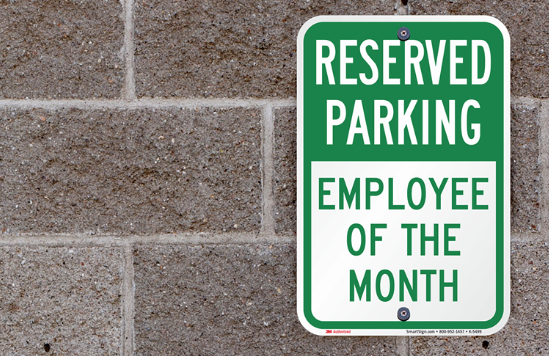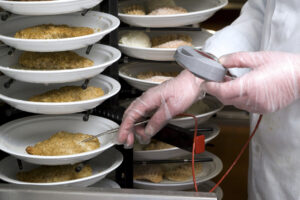[et_pb_section fb_built=”1″ _builder_version=”3.22″][et_pb_row _builder_version=”3.25″ background_size=”initial” background_position=”top_left” background_repeat=”repeat”][et_pb_column type=”4_4″ _builder_version=”3.25″ custom_padding=”|||” custom_padding__hover=”|||”][et_pb_text admin_label=”blog-text” _builder_version=”4.9.9″ custom_margin=”-50px|||” hover_enabled=”0″ saved_tabs=”all” sticky_enabled=”0″]
Offer incentives and perks to help create a positive culture for your restaurant. (Photo: EyeSpyCC)
In many cases, employees spend more time at work than they do at home. So why not create a welcoming, positive environment that employees want to come into and be a part of?
Creating a culture and atmosphere of inclusivity and engagement is not only important to your employees but it’s important to your business, too. As a restaurant owner, you should know how to create & improve restaurant culture, because happy employees mean happy customers and happy customers mean more business.
The current job market is incredibly competitive, so you’ve got to know how to keep good restaurant employees. To do that you’ve got to create a work culture restaurant for your restaurant that employees want to be a part of. After all, a good culture can mean the difference in keeping that star employee – or watching them walk out the door.
The Components of Good Restaurant Culture
1. Cultivate Good Behavior
Your restaurant culture should encourage good behavior while punishing bad. Culture is a learned behavior, so establish positive patterns and model the expectation. Are you a manager that shows up five minutes late to a meeting? You’re creating a culture that tells your employees it’s ok to be late.
2. Learned Behavior
There are two types of learned behaviors: Overt and covert behavior.
Overt behavior is displayed behavior, like how you eat with utensils or hold the door open for someone. Covert behaviors are not openly apparent, such as a feeling or plans for tomorrow.
Talk about these two types of behaviors with your staff and make sure they understand in both cases, your restaurant culture wants to model positive examples.
3. Visualize Success
Culture is an idea, a zeitgeist – get your staff to believe in it by making it tangible. Award employees through contests that model positive culture. Offer incentives in the form or subscription services like Spotify for employees, or other perks. Make a chart, run a contest. Outline your restaurant’s culture and expectations in your employee handbooks, posters, etc.
4. Craft the Outcome
You will only see culture in a behavioral form or in a regularly patterned fashion. Craft good habits to create good culture.
5. Adapt and Be Flexible
As your restaurant and staff evolves, so does your culture. The integration of different people makes it very simple for culture to change as a result of constant interaction with others. The exchange of ideas and symbols are factors that contribute to this.
[/et_pb_text][et_pb_text admin_label=”share this – text” _builder_version=”3.27.4″ saved_tabs=”all”]
Share this
[/et_pb_text][et_pb_social_media_follow admin_label=”social media follow – icons” _builder_version=”3.11″ text_orientation=”center” background_layout=”dark” module_alignment=”right” custom_margin=”|||” animation_style=”slide” animation_direction=”top” border_radii=”on|100%|100%|100%|100%”][et_pb_social_media_follow_network social_network=”facebook” url=”https://www.facebook.com/Eyespy/” _builder_version=”3.11″ background_color=”rgba(0,0,0,0.1)” custom_margin=”|10px||10px||true” custom_margin_tablet=”|10px||10px||true” custom_margin_phone=”|10px||10px||true” custom_padding=”10px|10px|10px|10px|true|true” custom_padding_tablet=”10px|10px|10px|10px|true|true” custom_padding_phone=”10px|10px|10px|10px|true|true” follow_button=”off” url_new_window=”on”]facebook
[/et_pb_social_media_follow_network][et_pb_social_media_follow_network social_network=”twitter” url=”https://twitter.com/eyespy_cc/” _builder_version=”3.11″ background_color=”rgba(0,0,0,0.1)” custom_margin=”|10px||10px||true” custom_margin_tablet=”|10px||10px||true” custom_margin_phone=”|10px||10px||true” custom_padding=”10px|10px|10px|10px|true|true” custom_padding_tablet=”10px|10px|10px|10px|true|true” custom_padding_phone=”10px|10px|10px|10px|true|true” follow_button=”off” url_new_window=”on”]twitter
[/et_pb_social_media_follow_network][et_pb_social_media_follow_network social_network=”instagram” url=”https://www.instagram.com/eyespy_cc/” _builder_version=”3.11″ background_color=”rgba(0,0,0,0.1)” custom_margin=”|10px||10px||true” custom_margin_tablet=”|10px||10px||true” custom_margin_phone=”|10px||10px||true” custom_padding=”10px|10px|10px|10px|true|true” custom_padding_tablet=”10px|10px|10px|10px|true|true” custom_padding_phone=”10px|10px|10px|10px|true|true” follow_button=”off” url_new_window=”on”]instagram
[/et_pb_social_media_follow_network][/et_pb_social_media_follow][/et_pb_column][/et_pb_row][/et_pb_section]







